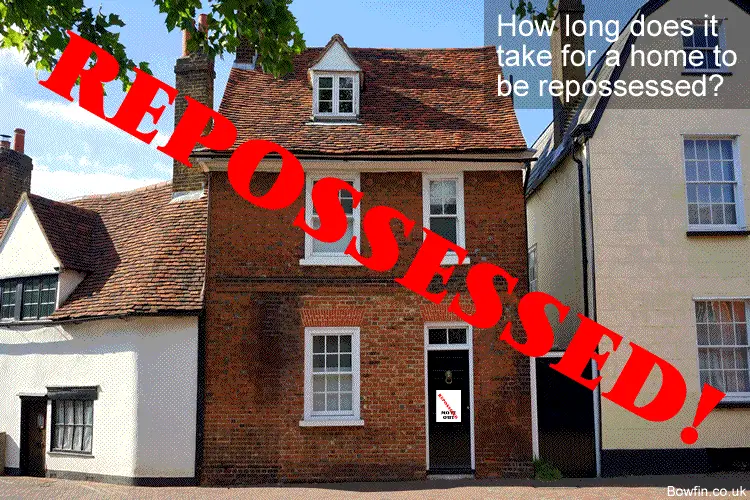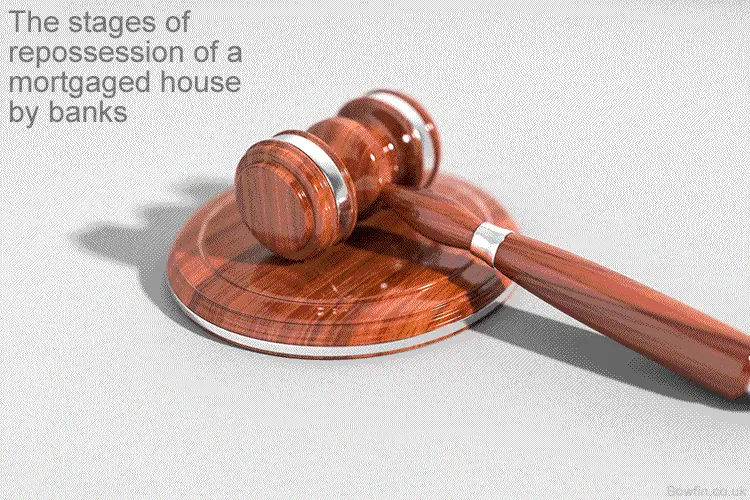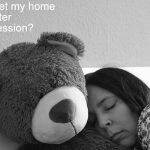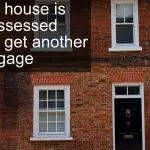
What is life like after house repossession and what happens after?
If you’re looking to find out the answer to this question ‘how long does it take for a home to be repossessed‘, this article explains this in detail.
How long does it take for a home to be repossessed? The time it takes for a home to be repossessed in the UK is between six months to a full 12 months. The time depends on your level of communication with your lender. If you ignore their letters the time taken is less. Once a court order is made it will state the time you have to move out: Normally between 28-56 days.
What does repossession mean?
Before I answer the question this article is about, I want to explain what home repossession means. What is life after house repossession like and what the consequences are as a result of being repossessed.
According to the Cambridge Dictionary, the meaning of repossession is ‘the act of taking something back, or the thing that is taken back‘. Which in this case the ‘something‘ is your home and the ‘taking back‘ is normally by the mortgage company.
How long does it take for a home to be repossessed in more detail?
The repossession by the bank or lending company of your mortgaged home happens in a number of stages. But there is something that can be done by you each stage of the repossession to help prevent it.
Usually the reason why your mortgage company will want to commence the stages of repossession is because you are in default of your mortgage payments. In other words you’ve not paid your mortgage payments on time and when they are due.
You probably already know that mortgage payments are taken by direct debit from your personal bank account.
But if you don’t have the funds in your bank account to cover the mortgage payment when your mortgage company go to debit the payment, this will ‘bounce‘.
Where ‘a bounced’ payment means your bank will reject the payment on the grounds that there’s insufficient funds in your bank. Alternatively, if you’ve cancelled the direct debit for your mortgage payment, in a similar way the payment will be rejected by your bank when they request it.
What happens once you miss your mortgage payments and what are the stages of repossession will largely depend on your level of communication with your lender. Ignore your lender at you peril!
But how long does it take to be repossessed?
The length of time it takes for you to lose your home to repossession depends on two major factors.
The first of these is within your control.
Communicate with your mortgage lender
Which is what you do yourself to prevent it from happening. If you act and if you engage with your mortgage lender, you can stop it. Or if not avoid the repossession of your home, slow the whole process down.
The actions you take and how fast you take action will make a big difference to the time it takes, or indeed if the repossession is stopped altogether.
For example, if you ignore your mortgage lender completely, the whole repossession process may take between 5-6 months from the date of your first missed payment.
But if you engage in communication with your lender you may delay the inevitable to around 12 months from your first missed mortgage payment.
More Reading: How long does a missed mortgage payment stay on your credit in the UK
How fast is the court system for repossessions
The second factor, which is not within your control, is about how fast or slow your case moves through the UK court system. These days the UK courts are overwhelmed and are struggling to list cases due to government cut backs.
But don’t rely on this to help you with your repossession case. As it may be that in your area of the UK the courts may be quicker.
However, once your case is heard in court in front of a judge. And once the judge has made his order for repossession. He can make an order for you to move out between 28-56 days from the court order date.
But now let’s take a look at the various stages in a repossession case. How long it takes for a home to be repossessed is then depended on how long each of the following stages take.
The stages of repossession of a mortgaged house by banks in the UK

There are usually seven stages of repossession in the UK. The time it takes before your home is repossessed will partly depend on the bank you borrowed from to by your home.
But it will also depend on how you respond to each stage in the repossession process.
The seven stages of repossession are as follows:
Stage 1 for a home to be repossessed
If you miss a payment on your mortgage, which takes you into arrears, your mortgage lender has to follow certain rules and guidelines. Your mortgage company is obliged to deal with you in a set and correct manner.
In the first instance when you’ve fallen behind on your mortgage payments, your lender’s first course of action should be to write to you to highlight the problem. In this first contact your mortgage lender should be asking you to sort the problem out.
Your mortgage company will usually include words to the effect of asking for you to look into the missed payment. They won’t know and it could be an oversight and an error on your part.
What to do at stage 1 of home repossession
If for example, it is a simple matter of a missed payment in error, this is easily fixed. However, if it’s more serious than that and you cannot afford the mortgage payment, the best advice is don’t ignore this first stage letter.
Seek help as early as possible! If you want to speak to us about your mortgage arrears and what can be done, please contact us.
Unfortunately most people who are in arrears do tend to ignore the letters from their mortgage lender. If this is your reaction, or if this is what you have done, you are not alone.
But you must take action, as it is possible to stop your home from being repossessed. But you have to act to slow the process down or to prevent it altogether.
You should either talk to or write to your lender in the first place.
They need to know you are open to working things out with them. Take time to consider your options. What you ideally want to be doing is to put a proposal to your lender about how you intend to deal with the arrears.
What your lender or mortgage company will do at stage one
In response to your initial proposal (assuming you respond, which is what I urge you to do), your mortgage company should respond in writing to your proposed cause of action.
In their second letter which is in response to your proposal or your lack of response, your lender should warn you that they’ll start court action to repossess your home if you don’t respond or indeed if they are unhappy with your response.
Your lender will want to resolve the problem with you. It’s not in their interest to repossess your home. You can therefore negotiate further with your lender at this stage too. You can counter propose if they reject your first proposal.
If this stage fails, either because your proposals or negotiations are rejected or if you fail to respond or reply to your mortgage company, this will lead to stage two.
Stage 2 for a home to be repossessed
If stage one has failed, your lender will apply to a court to ask for a repossession order. For your mortgage lender to repossess your home, they must obtain a court order. This is done via the local county court.
When they apply for the repossession order, your mortgage lender must set out the reasons why a court judge should give them possession of your home.
As a part of the repossession order, your mortgage lender will supply the court with your home address. This is so that the court can write to you to notify you of the next stages.
Stage 3 for a home to be repossessed
The court will respond to the repossession application lodged by your mortgage lender by fixing a date for the court hearing.
It will be at this court hearing where a judge will decide whether or not you can keep your home or not. If not then the judge will decide whether your mortgage lender should get possession.
You will receive from the court a copy of your mortgage lender’s claim form, together with:
- The time and date of the court hearing;
- The reasons why the mortgage lender wants to repossess your home;
- A defence form for you to complete and return to the court.
It is important at this stage to not ignore this court letter. You must reply to the court using the defence form and complete this to the best of your ability.
Do not ignore your mortgage lender. If you ignore them, they will proceed through the set stages of repossession. You will be repossessed if you don’t respond to your lender. There is always a solution to repossession. Contact us to find out what these solutions could be for you.
If you haven’t already done so, you should seek advice as soon as possible. An adviser who understands the repossession process will be able to help you prepare for the court hearing.
It’s still not too late to negotiate with your lender. Even at this late stage. But your adviser will be able to help you gather together what evidence you have. They will also be able to help you negotiate with your lender or your lender’s solicitor.
Stage 4 for a home to be repossessed
Whether you attend the court hearing or not, and I suggest that you do, the court session will go ahead.
I suggest that you do attend the court date, even if you are not going to be represented. When your case comes up, a judge will hear your repossession order case.
The judge in session will make his decision about your repossession. He will do so after reading and listening to the evidence from you and your lender.
There are a few possible outcomes from the repossesses hearing, as follows:
- The judge may decide that your home should be repossessed. If this is the decision, your mortgage lender can evict you and your family from your home. As a consequence of this your lender will likely sell your home in order to repay your mortgage debts.
- The judge may make a suspended possession order. A suspended repossession order will be granted if the judge decides you should have another chance to keep your home. If this is the outcome, this will allow you to stay in your home for a while longer. But the suspended possession order will come with certain conditions. To avoid repossession of your home, you must keep to these conditions. An example of this would be for you to pay your monthly mortgage installments, plus how many months mortgage arrears at a set amount.
- The judge may adjourn the case. If your case is adjourned this means the case will be postponed to a later date. This can happen if for example your lender is required by the judge to take certain steps before the case comes back to court.
- The case may be dismissed by the judge altogether. This is unlikely, but can happen if for example your lender has not followed correct procedures.
Stage 5 for a home to be repossessed
If in the above four outcomes, the judge in session makes an order for a repossession of your home, the judge will decide on a date when you have to leave your home.
The judge may rule that you have to pay the court costs. Additionally, your lender will add their legal costs to your outstanding mortgage.
You are normally given 28 days to move out of your home. However, some courts will allow you up to 56 days in certain circumstances.
If you are at this point in the repossession process, you need to be looking for a new home to move to.
But even then, you still might be able to prevent the repossession from happening, but you’ll need to act extremely fast and contact us right away. There are no promises, but we will always look to see what can be done.
Stage 6 for a home to be repossessed
Within the time frame given to leave, you must leave your home. This is the case whether you are given 28 days or more. If you don’t leave your home when you’ve been order to by the court, the bailiffs will be sent to remove you. This usually involves the police in order to keep the peace.
Alternatively, if you haven’t kept with your agreement made in court as regards your mortgage payments, as part of a suspended possession order, you may also be evicted by bailiffs too.
Bailiffs warrant of removal
For this to happen, your mortgage lender must apply to the court for a bailiff’s warrant. Without such a warrant, bailiffs will not be able to remove you from your home. This is despite the repossession order granted in court.
But this will only be a matter of time before your mortgage lender applies for this.
Before the bailiffs arrive, they will write to tell you when they will arrive to repossess your home. When they arrive to evict you, the bailiff cannot cannot use physical violence or offensive language. But if you don’t leave voluntarily, the bailiffs will likely involve the police.
If this happens, you’ll have no choice but to leave your home. This is even if you have children living with you.
The costs of the bailiff will also be added to your outstanding mortgage or loan.
Stage 7 for a home to be repossessed
Once your mortgage lender has possession of your home, your home will be sold by them. This usually happens at under market value. As far as the lender is concerned, they want to pay off as much of the mortgage as possible.
Up until your property is sold, you are still responsible for paying interest on what is outstanding. This will include the added court costs and bailiff charges.
If after the sale of your home and there’s any amount left over, your lender will pay you this balance. But if on the other hand there is a shortfall between what you owe and what the property is sells for, you may have to pay off any mortgage shortfall to the lender.
What you should do to stop being repossessed
First and foremost you must not ignore your mortgage lender.
The more you ignore your lender, the faster the repossession will take. Your mortgage lender is obliged to write and contact you, but if you choose to ignore them they are given no alternative.
Mortgage companies would prefer to work with you than not. Repossession is never a nice thing to go through and the ramifications are quite serious. You should be doing everything you can to stop it and there is help at hand for you to turn to.
We are always happy to speak to you about your problem and we have solutions that may be able to help. You can also speak to your local Citizens Advice centre, or speak with StepChange Debt Charity and Shelter. If you live in Wales you also have the option to speak with the Housing Debt Helpline or CAIS too.
Above all, don’t bury your head in the sand!
What is life like after house repossession?
Life after a repossession may be tough for a while. Firstly, you will need to find a new home to live in. Your local council will help you with this. But the sooner you let your local council know about your repossession, the quicker they’ll be able to sort something out for you.
Your credit rating and credit report will be damaged as a result of being repossessed. This will not only affect your ability to borrow again, but it will go against you in the early stages in trying to rent a property too.
You will also likely have lost many, if not all of your possessions. This will be tough and of course you may need to replace these.
I hope this article has helped on ‘How long does it take for a home to be repossessed in the UK’
If this article has helped on ‘How long does it take for a home to be repossessed in the UK’ please share it on your favourite social media site.
Also, if you have any questions, please feel free to comment below too. Alternatively, if you need more help, please feel free to contact us on our contact us page here.





If you go into repossession , will bank and other secured loans can access your other assets or is it just the house they are secured against?
Hello Emily, thank you for your comment and sorry for my delayed response. This depends on how much you are I arrears and/or if you are in negative equity. Please contact me to see if we can help you with this problem, the sooner the better!